Planet formation is a notoriously difficult thing to observe. Nascent planets are ensconced inside dusty wombs that resist our best observation efforts. But recently, astronomers have made progress in imaging these planetary newborns.
A new study presents the first-ever direct images of twin baby planets forming around their star.
The study is titled “Keck/NIRC2 L’-band Imaging of Jovian-mass Accreting Protoplanets around PDS 70.” The lead author is Jason Wang from Caltech. The study is published in The Astronomical Journal.
The proud mama is PDS 70, a star in the Centaurus constellation. It’s about 370 light years away, and has a mass of about 0.82 solar masses. PDS 70 is in its prime child-bearing years: only about 10 million years old.
When it comes to planet formation, there are two ways it happens: core accretion, and disk instability.
Core accretion of a terrestrial planet starts with dust. Once enough dust accumulates together, it forms a boulder-sized planetesimal. Larger planetesimals can accrete smaller ones, while some planetesimals collide and shatter. Over a long enough period of time, enough rocky material collects to form planetesimals the size of mountains. Given more time and material, a protoplanet coalesces. Eventually, the protoplanet grows massive enough to be a planet, and at some point, it has swept up all the available material, and stops growing.
There are some gaps in our understanding of the process, but eventually planets form through accretion, both rocky planets and gas giants. And it all takes place behind a dusty veil.
In this study, scientists present evidence for two Jovian-sized planets forming around PDS 70 via core accretion.
The first planet, PDS 70b, was actually first imaged in 2018. Images of its sibling, PDS 70c, followed in 2019. They were both discovered with the European Southern Observatory’s Very Large Telescope. But at first, the images were confusing, and not easily discerned inside the disk of material surround the star.
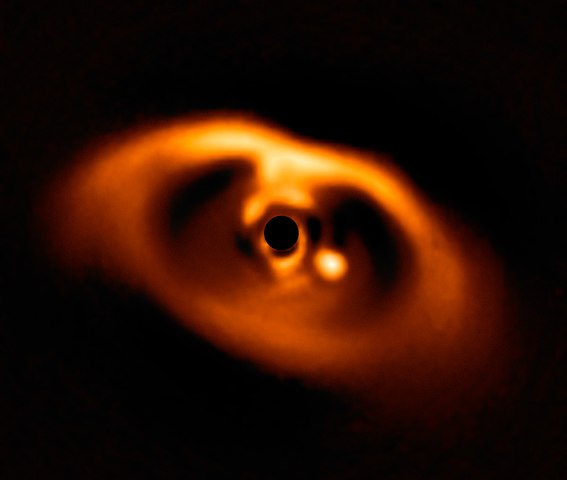
“There was some confusion when the two protoplanets were first imaged,” said Jason Wang, a Heising-Simons Foundation 51 Pegasi b Fellow at Caltech and lead author of the study. “Planet embryos form from a disk of dust and gas surrounding a newborn star. This circumstellar material accretes onto the protoplanet, creating a kind of smokescreen that makes it difficult to differentiate the dusty, gaseous disk from the developing planet in an image.”
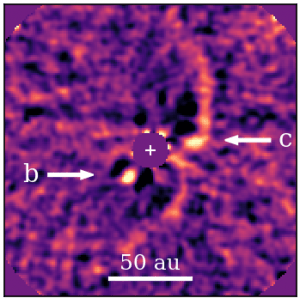
Image Credit: J. Wang, Caltech
As lead author Jason Wang points out, there was some uncertainty around the original images of the pair of planets. In this study, the team used a new infrared pyramid wavefront sensor for adaptive optics (AO) correction at W. M. Keck Observatory on Maunakea in Hawaii. Those observations confirmed the existence of the sibling gas giants.
The PDS 70 system is now the first known multiplanetary system where scientists can watch the planets forming.
To confirm the existence of the pair, Wang’s team developed a new method to untangle the planets themselves from the circumstellar disk.
“We know the disk’s shape should be a symmetrical ring around the star whereas a planet should be a single point in the image,” said Wang. “So even if a planet appears to sit on top of the disk, which is the case with PDS 70c, based on our knowledge of how the disk looks throughout the whole image, we can infer how bright the disk should be at the location of the protoplanet and remove the disk signal. All that’s left over is the planet’s emission.” Simple, right?
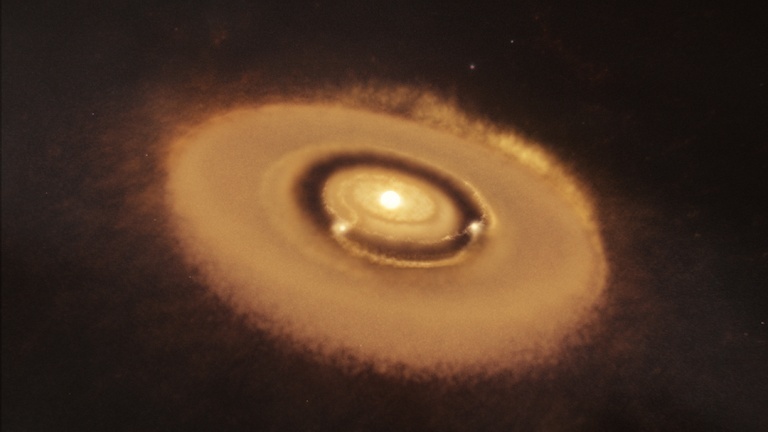
The Keck Observatory in Hawaii has two separate, 10 meter (33 ft) telescopes, called Keck I and Keck II. Keck II has the Near-Infrared Camera (NIRC2). When combined with Advanced Optics, and a new infrared pyramid wavefront sensor, the telescope has taken a leap forward in studying exoplanets, and was the key to confirming the two planets forming around PDS 70.
“The new infrared detector technology used in our pyramid wavefront sensor has dramatically improved our ability to study exoplanets, especially those around low-mass stars where planet formation is actively occurring,” said Sylvain Cetre, software engineer at Keck Observatory and one of the lead developers of the AO upgrade. “It will also allow us to improve the quality of our AO correction for harder to image targets like the center of our galaxy.”
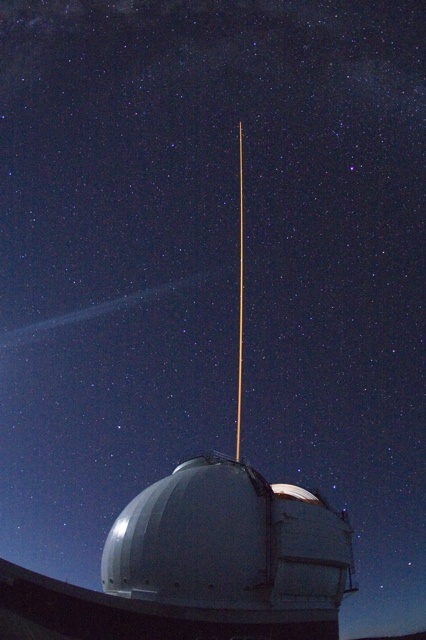
According to the study, PDS 70b is a gas giant between 2 and 4 Jupiter masses. 70 b is about 1000 degrees Celsius, has its own accretion disk, and has an orbital radius of about 3.2 billion km. 70b is one of the youngest imaged exoplanets, about 5.4 ± 1.0 Myr old. The authors say there is now no doubt that it’s a planet, writing “As it was clearly inside the gap in the <circumstellar> disk, PDS 70 b is unambiguously a planet and not a disk feature.”
PDS 70c is between 1 and 3 Jupiter masses. Its orbital distance is much greater than the other planet, at about 5.3 billion km. 70c is in a 1:2 orbital resonance with 70b, meaning that 70c completes one orbit of the star for each two orbits that 70b completes.
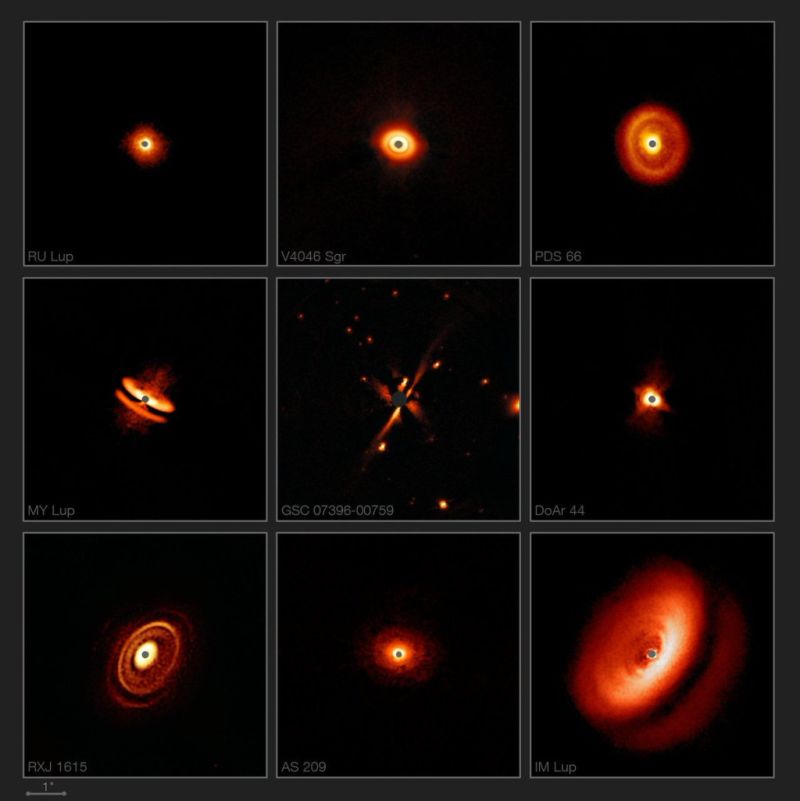
Both exoplanets show evidence of their own circumplanetary disks of material, which shows that the planets are still growing. Once they’ve swept up all available material from the circumstellar disk into their own circumplanetary disks, they’ll stop growing.
PDS 70b shows some evidence of water absorption in its spectra, but that’s very tenuous. In fact, since they’re still growing, the team of scientists thinks it’s unlikely that they have recognizable atmospheres at this point,or at least none that fit any planetary models. “Given that these two planets are unlike other directly imaged planets and brown dwarfs in that they appear to still be accreting from the circumstellar disk , we note that it is very likely that no existing atmospheric model accurately describes its SED <spectral energy distribution.>”
They also point out that the planets have very low masses, compared to other imaged exoplanets. “The mass estimates make PDS 70 b and c two of the lowest-mass directly imaged planets to date,” they write.
This study is a prime example of how technology can drive discovery. Without the addition of the new infrared sensor on the Keck II telescope, this exoplanet confirmation wouldn’t have been possible.
“New technology is a science multiplier,” says Peter Kurczynski, program director at the National Science Foundation, which contributed funding to this project. “It enables investigations that were never before possible.”


“70c is in a 1:2 orbital resonance with 70b”, which should help support the both planet cases.
Thanks, lots of interesting development covered in one go!